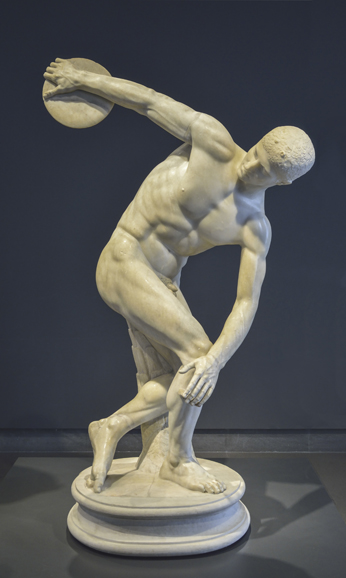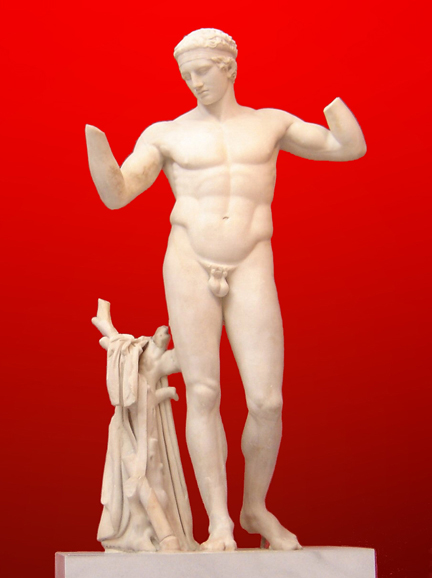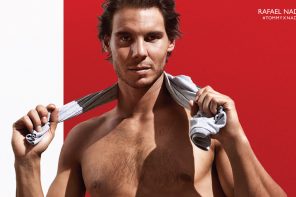With the Rio Games, the mainstream media discovered what women, gays and the ancient Greeks have always known: Olympic bodies are hot, particularly the men’s.
Gisele Bündchen may have catwalked her way to “The Girl From Ipanema” at the opening ceremonies, but the guys at Ipanema generated just as much — if not more — buzz. Witness Pita Taufatofua, the taekwondo champ who carried the flag for Tongo in a vibrant print native skirt, necklace and arm bracelets that underscored a well-oiled bare chest. In Brazil, the land of skin, his stunning appearance nonetheless caused enough discombobulation that we Americans could be forgiven for forgetting that our country would not be following reliably, alphabetically under the U’s. (We had been filed under E for Estados Unidos da America, as per Brazil’s Portuguese tongue.)
Taufatofua’s sensational turn earned the inevitable moment on NBC’s “Today,” where Jenna Bush Hager, Hoda Kotb, Natalie Morales and even Matt Lauer paid homage. (Al Roker only went so far as supplying the sunscreen the ladies eagerly applied to Taufatofua’s caramel-colored skin.)
As my uncle would say, if the sexes were reversed in that situation, well … precisely. We are in a postfeminist, post-gay age in which gay marriage is the law of the land and a woman stands on the threshold of becoming the most powerful person on earth. Gisele may strut and we may fret about the shape, size and status of the female body — still the primary sex symbol in culture, as our opening essay discusses — but it is no longer politically correct to treat women as sex objects. Event after event, commercial after commercial at the Rio Games — which NBC produced as a kind of running narrative for a primarily female audience — extolled the mental and physical strength of female athletes as they overcame adversity (gymnast Simone Biles), charted new territory (swimmer Simone Manuel) or juggled sport and motherhood (beach volleyball’s Kerri Walsh Jennings).
The sleek uniforms underscored female power and functionality — the sports bras supporting breasts they never offered up for delectation, the bikini bottoms, bicycle shorts, sequined leotards and one-piece swimsuits underlining tummy bulges, sway backs and other real properties that actual female flesh is heir to. When 5-foot, 10-inch, 273-pound American weightlifter Sarah Robles cleared 364 pounds in the clean and jerk for the bronze, she said, “It’s a great thing for weightlifting as a sport. It’s a great thing for women. It’s a great thing for women of size.”
But given the functionality of most male clothing, the sleek men’s uniforms had the opposite effect of the women’s. The men’s uniforms presented the male body for display at a moment when it is particularly socially acceptable. The swimmers’ jammers and the divers’ Speedos — to name but two disciplines — packaged the, well, packages as the camera lingered on physiques poised on the starting block or the diving board/platform, slithering through the warmup pool or standing sensuously under the shower. (Is it getting warm in here?)
Cosmopolitan magazine — bless its little lascivious heart — did the hard work for us in an online feature, “36 of the Greatest Summer Olympic Bulges.” Runners, rowers and riders, Aussies, Africans and Asians — no one escaped Cosmo’s equal-opportunity appraisement.
But Cosmo has nothing on the ancient Greeks, who invented the games in 776 B.C. in honor of Zeus, king of the gods. Held at Olympia, the games were open only to free-born men and featured only a handful of events — running, wrestling, boxing, equestrian sports, the Pentathlon and Pankration (extreme boxing-wrestling). (Apparently, however, women could own racing chariots.)
At first, the men wore loincloths, but ultimately the games went “The Full Monty,” the men oiling their bodies for both hygienic and aesthetic reasons. Married women were forbidden to watch the games under penalty of death. But unmarried women could attend, presumably to, ahem, size up potential suitors.
If only the Peacock Network had been around back them. This would’ve made for some great interviews with Bob Costas.






